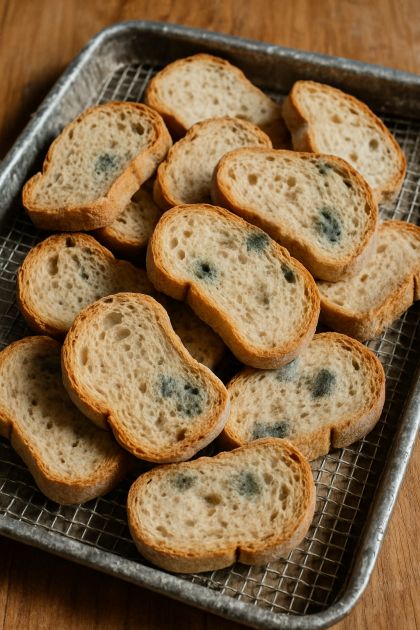ADVERTISEMENT
Food waste is a significant environmental issue, with approximately 1.3 billion tons of food wasted globally each year. Bread is one of the most commonly wasted food items. When food is wasted, it not only represents a loss of resources used in its production, such as water and energy, but also contributes to greenhouse gas emissions when it decomposes in landfills.
By finding ways to use stale bread, you can help reduce food waste and its environmental impact. Even small actions, like repurposing stale bread, can contribute to a more sustainable food system.
4. Creative Ways to Revive Stale Bread
There are several creative ways to bring stale bread back to life. One popular method is to sprinkle the bread with a little water and then place it in a preheated oven at 350°F (175°C) for about 10 minutes. This can help restore some of the moisture and make the bread more palatable.
Another option is to use stale bread in recipes that naturally incorporate moisture, such as French toast, bread pudding, or stuffing. These dishes can transform dry bread into a delicious meal, making the most of what might otherwise be wasted.
5. Popular Viral Hacks for Using Stale Bread
Social media is full of viral hacks for using stale bread. One popular hack involves using stale bread to make homemade breadcrumbs. Simply grind the bread in a food processor and store the crumbs in an airtight container for future use in recipes like meatballs or as a topping for casseroles.
Another trending hack is to use stale bread to make croutons. Cut the bread into cubes, toss with olive oil and your choice of seasonings, and bake until crispy. These croutons can add a delightful crunch to salads and soups.
6. Nutritional Value: Does Stale Bread Lose Its Benefits?
Stale bread retains most of its nutritional value, as the primary change is in texture rather than composition. Bread is a source of carbohydrates, fiber, and some vitamins and minerals, and these nutrients remain intact even as the bread becomes stale.
However, if the bread is enriched or fortified, some of the added nutrients may degrade over time. It's also worth noting that the enjoyment of eating stale bread may decrease, which could affect how often you choose to consume it.
7. How to Properly Store Bread to Prevent Staleness
Proper storage is key to preventing bread from going stale. Bread should be stored in a cool, dry place, ideally in a bread box or a paper bag that allows some air circulation. Avoid storing bread in the refrigerator, as this can accelerate staleness due to the cold temperature causing the starch to crystallize faster.
If you have more bread than you can consume in a few days, consider freezing it. Wrap the bread tightly in plastic wrap or aluminum foil and place it in a freezer bag. When you're ready to use it, thaw the bread at room temperature or toast it directly from the freezer.
8. When to Draw the Line: Signs Your Bread Is Beyond Saving
ADVERTISEMENT
